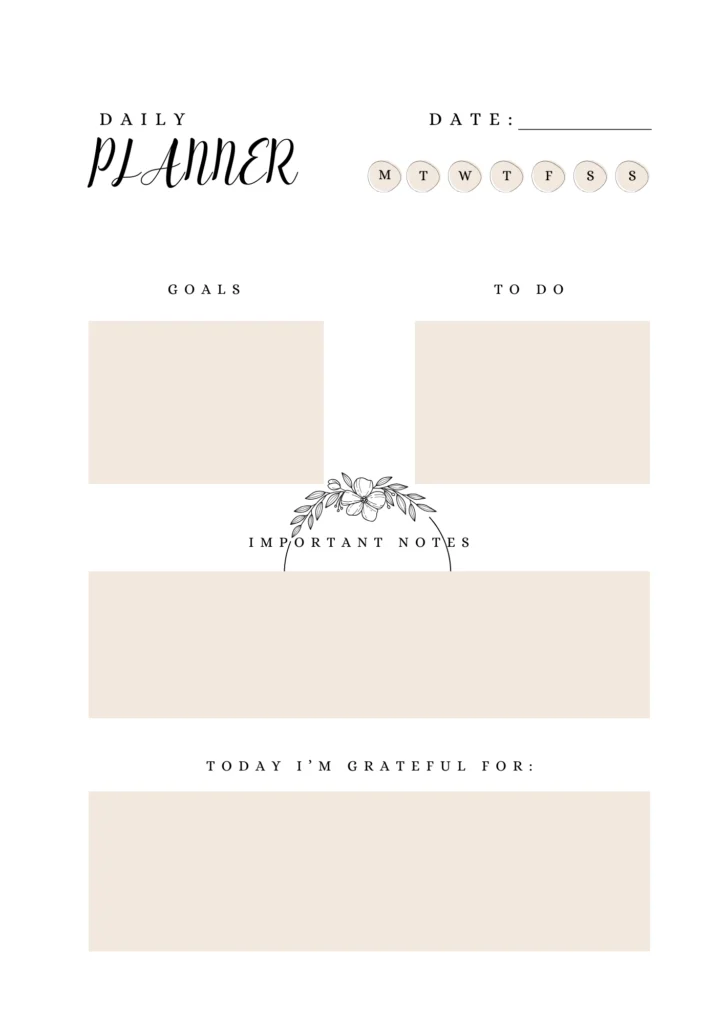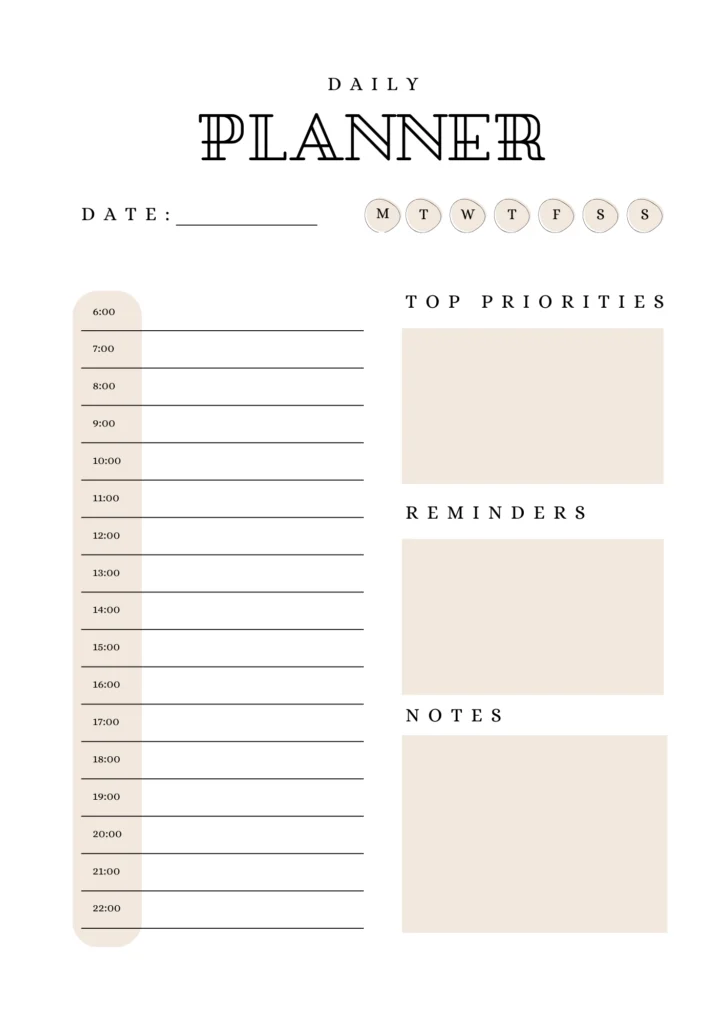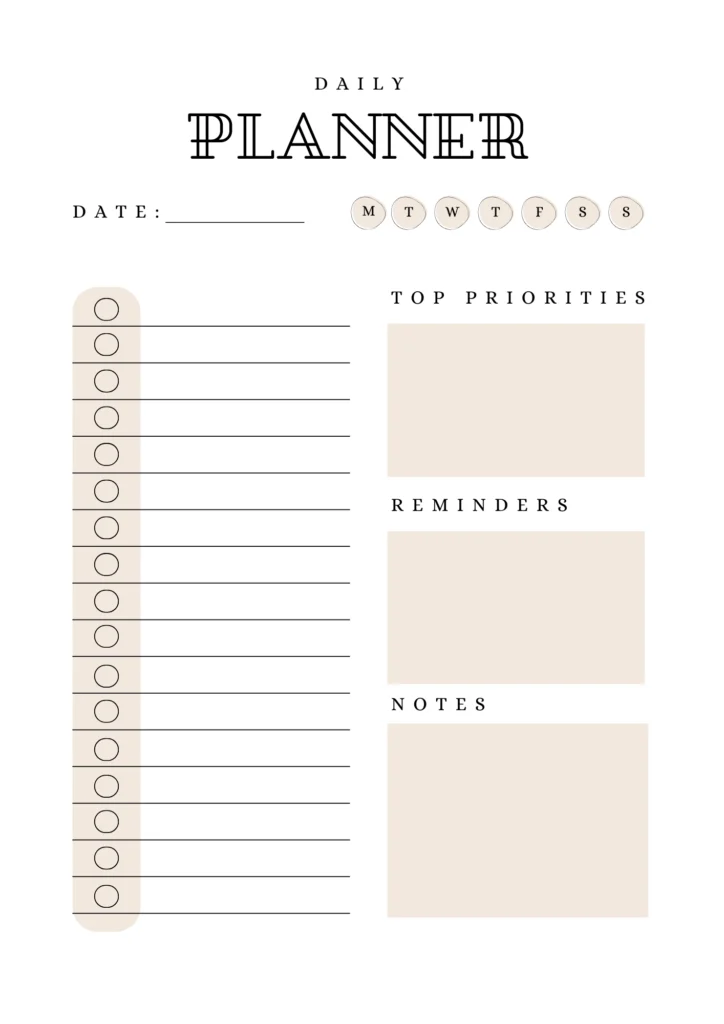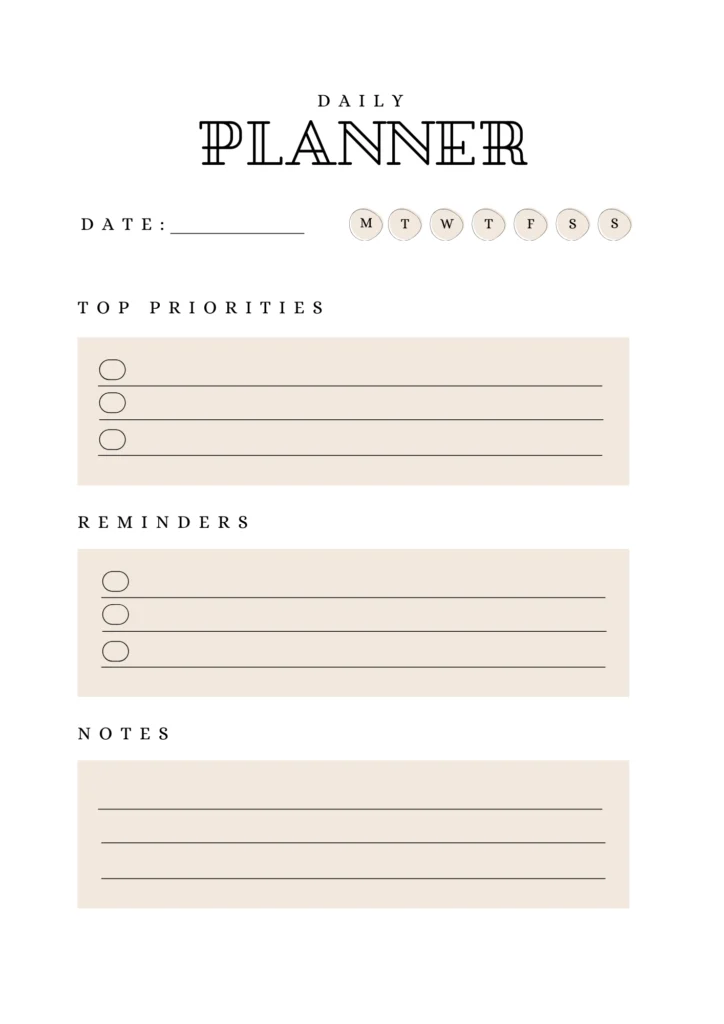
Daily tracker printables are one of the most effective tools for staying organized and productive throughout your day. Unlike digital apps that can get lost in notifications, a physical daily tracker keeps your priorities visible and helps you build consistent habits. Here’s how to make the most of daily trackers to transform your daily routine and boost your productivity.
Why Daily Tracker Printables Work & How to Use Them
Physical tracking offers advantages that digital versions can’t match. Writing things down by hand helps you remember tasks and goals more effectively. Having a visible tracker on your desk creates a constant reminder of your priorities without the distractions of phones or computers.
Daily trackers also give you complete customization freedom. You can use different colored pens for different types of tasks, add stickers for completed goals, or decorate your tracker to make the planning process more enjoyable and personal.
Step 1: Choose the Right Daily Tracker Format
The first step to successful daily tracking is selecting a format that matches your planning style and daily needs.
Goal-oriented daily tracker: Perfect for people working toward specific objectives. Includes sections for daily goals, to-do lists, important notes, and gratitude practice.
All-in-one daily planner: Comprehensive format that shows your entire day at a glance. Features hourly schedules or tick boxes, top priorities, reminders, and notes sections.
Minimalist daily tracker: Simple design for those who prefer basic organization. Contains top priorities, reminders, and notes sections without overwhelming details.
Hourly daily planner: Time-blocked format ideal for people with packed schedules who need to manage their time down to the hour.
Choose a daily tracker printable that feels manageable rather than overwhelming. You’re more likely to use it consistently if it doesn’t feel like a chore to fill out.
Step 2: Set Up Your Daily Tracking Routine
Consistency is key to making daily trackers work effectively for your organization.
Evening preparation (5-10 minutes):
- Fill out your tracker the night before
- Set your top 3 priorities for tomorrow
- Schedule any fixed appointments or deadlines
- Note any preparation needed for the next day
Morning review (2-3 minutes):
- Check your tracker while having coffee or breakfast
- Adjust priorities if needed based on new information
- Set your intention for the day
This routine ensures you start each day with a clear direction and end each day prepared for tomorrow.
Step 3: Master the Art of Priority Setting
Effective use of daily printables requires smart priority management to avoid overwhelming yourself.
The three-priority rule:
- Identify your top 3 most important tasks each day
- These should be tasks that move you toward your bigger goals
- Everything else is secondary and can be done if time allows
Time estimation practice:
- Write estimated time next to each task
- Track how long tasks actually take
- Use this data to improve future planning
Energy matching:
- Schedule demanding tasks during your high-energy hours
- Save routine tasks for when your energy naturally dips
Step 4: Create Effective Time Blocks
Time blocking transforms your daily tracker printable from a simple to-do list into a powerful time management tool.
How to implement time blocking:
- Assign specific time slots to your top priorities
- Include buffer time between tasks for transitions
- Block time for unexpected interruptions or urgent tasks
- Schedule breaks to maintain energy throughout the day
Time blocking benefits:
- Prevents tasks from expanding to fill available time
- Reduces decision fatigue about what to work on next
- Creates realistic expectations about what you can accomplish
Step 5: Build in Accountability and Reflection
Daily trackers work best when you use them for both planning and reflection.
Midday check-ins:
- Review progress around lunch time
- Adjust afternoon priorities based on morning accomplishments
- Identify any obstacles that need addressing
End-of-day reflection:
- Mark completed tasks with satisfaction
- Note what worked well and what didn’t
- Identify lessons for tomorrow’s planning
Weekly reviews:
- Look at patterns across your daily trackers
- Celebrate consistent wins
- Adjust your system based on what you’ve learned
P.S. Make sure to check out how you can utilize weekly trackers easily!
Step 6: Customize Your Tracking System
Make that trackers work for your specific lifestyle and goals.
Color coding system:
- Use different colors for work, personal, and health tasks
- Highlight urgent items in red
- Use green for completed tasks
Habit integration:
- Add small habit checkboxes to your daily tracker
- Track things like water intake, exercise, or reading
- Build consistency through visual accountability
Personal touches:
- Add motivational quotes or affirmations
- Include gratitude sections for positive mindset
- Use stickers or drawings to make tracking fun
Common Daily Tracker Mistakes to Avoid
Overcommitting your day: Don’t try to schedule every minute. Leave white space for unexpected tasks and mental breaks.
Ignoring your tracker midday: Your daily tracker only works if you reference it throughout the day, not just in the morning.
Being too rigid: Life happens. Adjust your tracker as needed rather than abandoning it when plans change.
Focusing only on productivity: Include self-care, breaks, and personal time in your daily tracker for balanced living.
Making Daily Trackers a Long-Term Habit
Start small: Begin with just tracking your top 3 priorities. Add more sections gradually as the habit becomes natural.
Be consistent: Use your daily tracker every day for at least two weeks to establish the routine.
Adapt as needed: Your tracking needs will change over time. Adjust your format or add new sections as your life evolves.
Celebrate progress: Acknowledge how daily tracking improves your organization and productivity to reinforce the habit.
Download Free Daily Tracker Printables
If you want to give daily tracking a try, browse the ones I created below, and find your favorite printable. In case you’re someone that’s used to using a digital tracker, or notes on your phone even, it will probably take some time to get used to having a paper tracker. But as I do, you can also mix and match and find your preferred system.
I hope these printables help you as much as they’ve helped me.
The Bottom Line: Daily Tracker Success
Daily tracker printables work because they combine the power of written planning with visual accountability. The key is finding a format that feels natural to use and building consistent habits around filling it out and checking in throughout the day.
Start with one tracker format and use it consistently for two weeks. Once daily tracking becomes automatic, you can experiment with different layouts or add more detailed sections. Remember: the best daily tracker is the one you use every day.
Your tracker becomes more valuable the more you use it. The physical act of writing down your priorities and checking off completed tasks creates positive momentum that improves your overall organization and time management skills.
Frequently Asked Questions
Here are some common questions:
A daily tracker printable is a template you can download and print to help you track your daily habits, tasks, and goals. It typically includes spaces to record activities, check off completed items, and monitor progress over time.
For best results, try to update your tracker daily, ideally at the same time each day. Some people prefer to fill it out in the morning to plan their day, while others like to complete it in the evening to reflect on their progress.
Start with 3 main priorities plus 3-5 smaller tasks. You can always add more as you get comfortable with the system.
Absolutely! Many people use paper trackers for daily planning and digital calendars for appointments and reminders.




